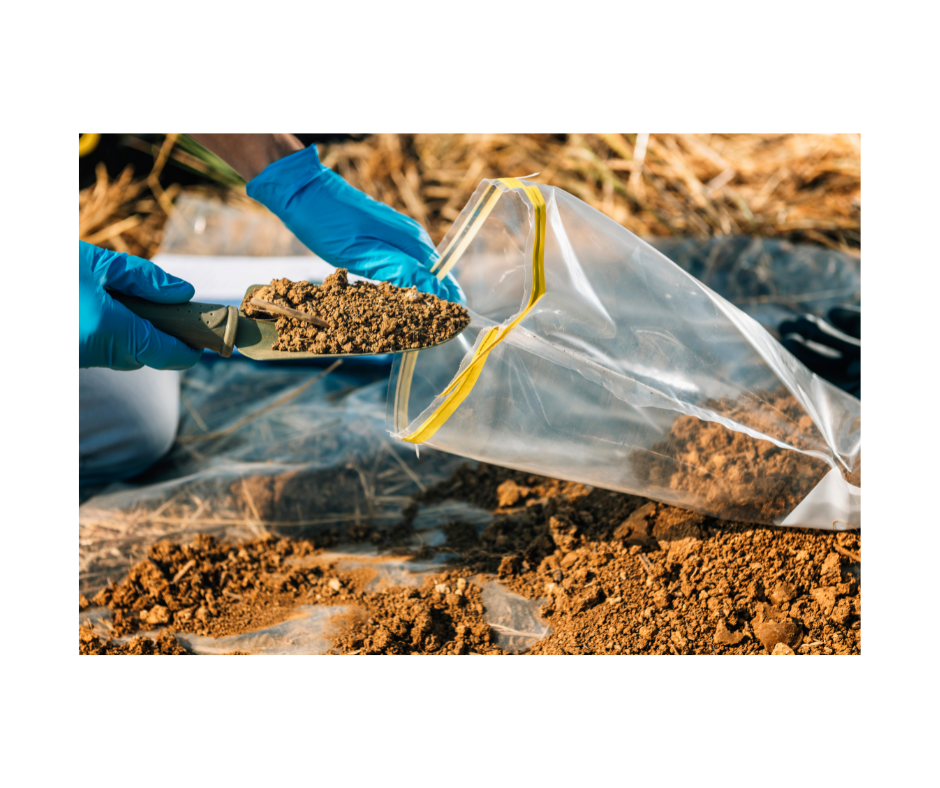Soil Sampling and Its Necessity
go.ncsu.edu/readext?966053
en Español / em Português
El inglés es el idioma de control de esta página. En la medida en que haya algún conflicto entre la traducción al inglés y la traducción, el inglés prevalece.
Al hacer clic en el enlace de traducción se activa un servicio de traducción gratuito para convertir la página al español. Al igual que con cualquier traducción por Internet, la conversión no es sensible al contexto y puede que no traduzca el texto en su significado original. NC State Extension no garantiza la exactitud del texto traducido. Por favor, tenga en cuenta que algunas aplicaciones y/o servicios pueden no funcionar como se espera cuando se traducen.
Português
Inglês é o idioma de controle desta página. Na medida que haja algum conflito entre o texto original em Inglês e a tradução, o Inglês prevalece.
Ao clicar no link de tradução, um serviço gratuito de tradução será ativado para converter a página para o Português. Como em qualquer tradução pela internet, a conversão não é sensivel ao contexto e pode não ocorrer a tradução para o significado orginal. O serviço de Extensão da Carolina do Norte (NC State Extension) não garante a exatidão do texto traduzido. Por favor, observe que algumas funções ou serviços podem não funcionar como esperado após a tradução.
English
English is the controlling language of this page. To the extent there is any conflict between the English text and the translation, English controls.
Clicking on the translation link activates a free translation service to convert the page to Spanish. As with any Internet translation, the conversion is not context-sensitive and may not translate the text to its original meaning. NC State Extension does not guarantee the accuracy of the translated text. Please note that some applications and/or services may not function as expected when translated.
Collapse ▲Harvest is wrapping up for many crops in Sampson County. Corn, tobacco, and sweet potatoes are nearly harvested, and soybeans, peanuts, and cotton are following close behind. Many farmers are now turning their attention to small grains or cover crops for the winter. Before planting time starts, I wanted to take a moment and remind everyone to stop and take soil samples. Soil samples give you a snapshot of the nutrients that are present in the soil at the time the samples were taken. Samples will give you an idea of nutrient levels in the soil and pH and can give you an idea of the amount of nutrients taken up by the previous crop. The recommendations that come from these samples can help you apply the optimal fertilizer and lime for the next crop. Soil sample recommendations are a good starting point for fertility management on your land and can help in preventing you from applying too much of a nutrient that you don’t need. This helps save you money and prevent possible toxicity issues. As margins get tighter for most farmers, taking the time to sample is critical.
This time of year is the best time to sample–if you are sending your samples to NCDA&CSthey are free until Thanksgiving. From Thanksgiving until April there is a peak season charge of four dollars per sample so if you want to save some money, get out there and sample sooner rather than later.
Some nutrients are mobile in the soil and can leach out, but others are immobile. In North Carolina, we get enough rain that most nitrogen in the soil will leach out of the root zone and this is especially true in the coastal plain with our sandier soils. NCDA&CS soil lab tests for nutrient levels for every essential plant nutrient except for nitrogen since it can leach. Waters or other private labs can give you nutrient levels including nitrogen, but it is only accurate for the time the samples were pulled. Your nitrogen fertility could be completely different in two weeks. Also, keep in mind that the recommendations you get are only as good as the samples you send. In general, more is always best. At the very least it is recommended to take a sample for every five acres of field. I recommend taking more than this, either in a grid pattern to use in field mapping or take several samples according to the field terrain. For example, take a few samples on hill and then some in the low spots and a few in between. This way you have a good representation of the entire field.
You can take your NCDA&CS samples to your local Cooperative Extension office and we will periodically take them to the soil lab in Raleigh. Also, if you need sample boxes or forms, please call, or drop by your local Extension office.




